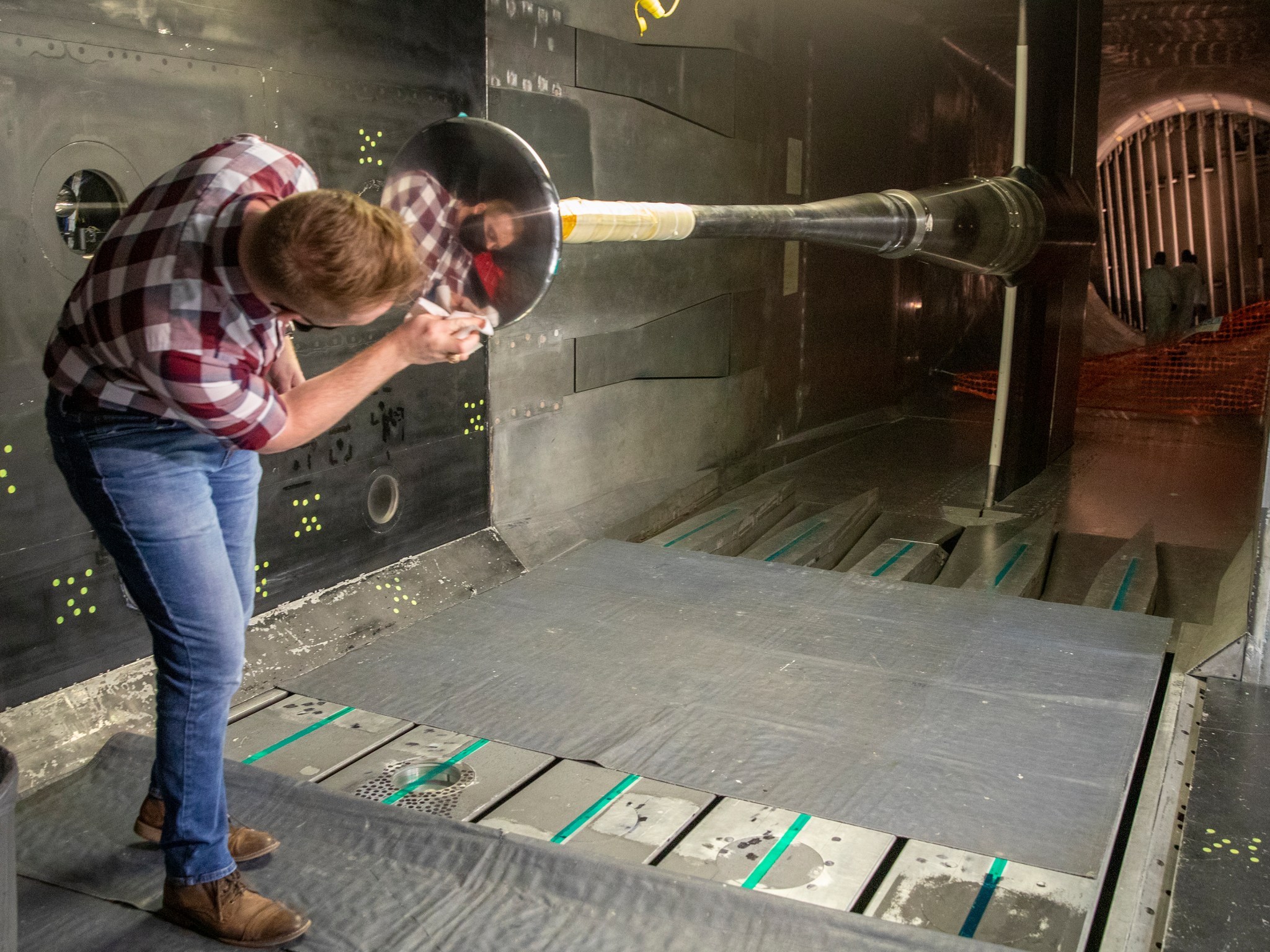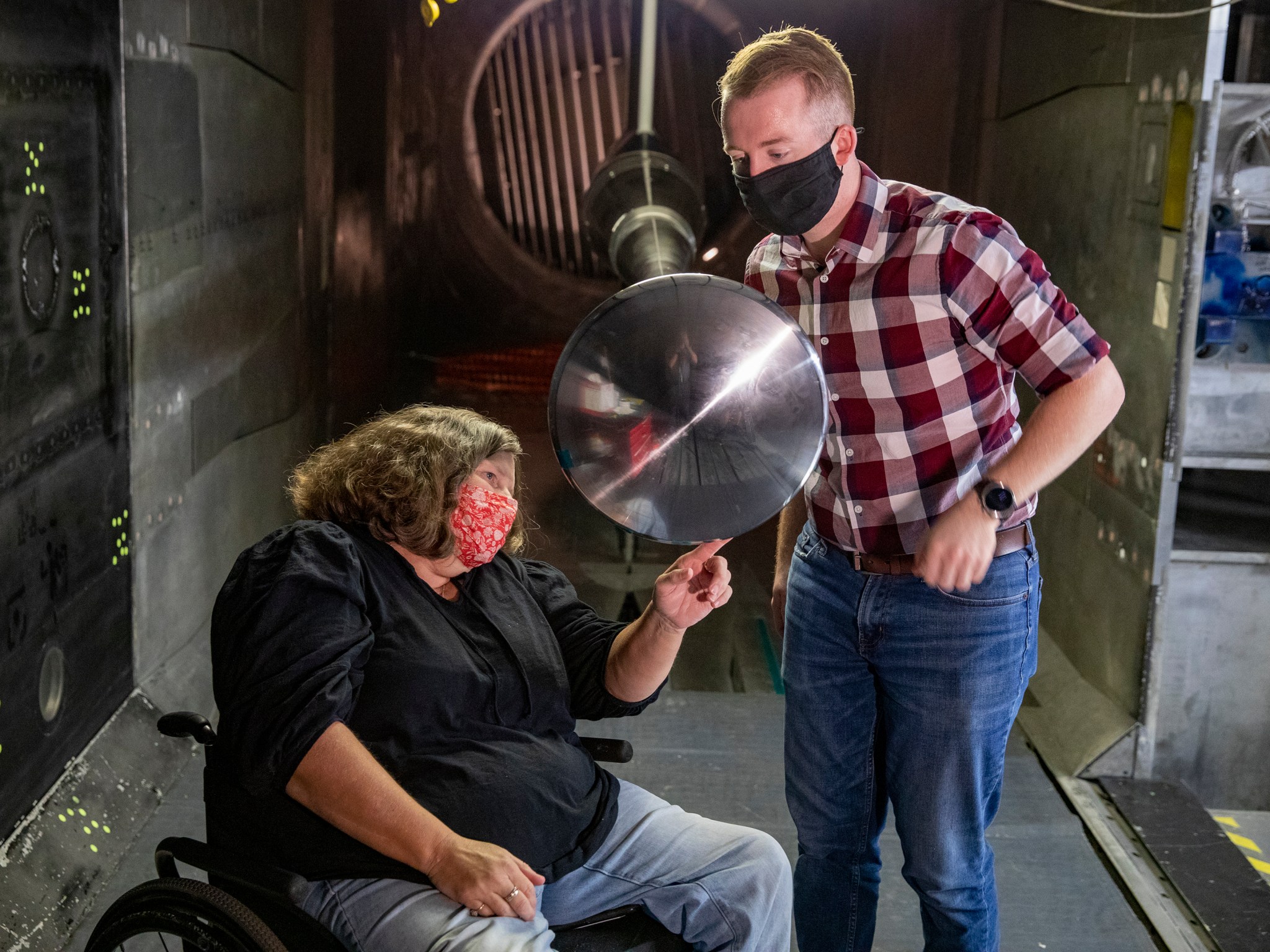When NASA astronauts return from the Moon on Artemis missions, a heat shield will protect the Orion spacecraft from the intense heat and pressure of re-entry through Earth’s atmosphere. But what happens to that heat shield once things slow down
That’s what a team of researchers at NASA’s Langley Research Center in Hampton, Virginia is hoping to learn from a series of tests in the National Transonic Facility wind tunnel.
After Exploration Flight Test – 1, engineers made some adjustments to the manufacturing process for the heat shield. Instead of one large piece, it’s now made of smaller blocks that ablate, or burn off, during entry into the Earth’s atmosphere. The update changed the shape the heat shield will be when it reaches subsonic speeds, or speeds slower than the speed of sound (around 767 miles per hour).
“The changes don’t make a lot of difference to the aerodynamics until you get down to subsonic speeds. Across the heat shield, it’s like the difference between water running over a pebble versus a boulder in a stream,” explained Karen Bibb, aerospace engineer. “The new shape changes how the air flow becomes turbulent and separates around the heat shield shoulder, and this can significantly impact the vehicle drag,”
The tests in the wind tunnel show the effects of aerodynamic pressures on the ablated heat shield at subsonic speeds. They also validate the heat shield aerodynamic model database for Artemis I and feed into an updated validation database for Artemis II, NASA’s first mission with crew.
With Artemis, NASA will land the first woman and the first person of color on the on the lunar surface, establish a long-term presence at the Moon, and prepare for human missions to Mars. NASA’s Space Launch System rocket and Orion, along with the commercial human landing system and the Gateway in orbit around the Moon, are NASA’s backbone for deep space exploration.































